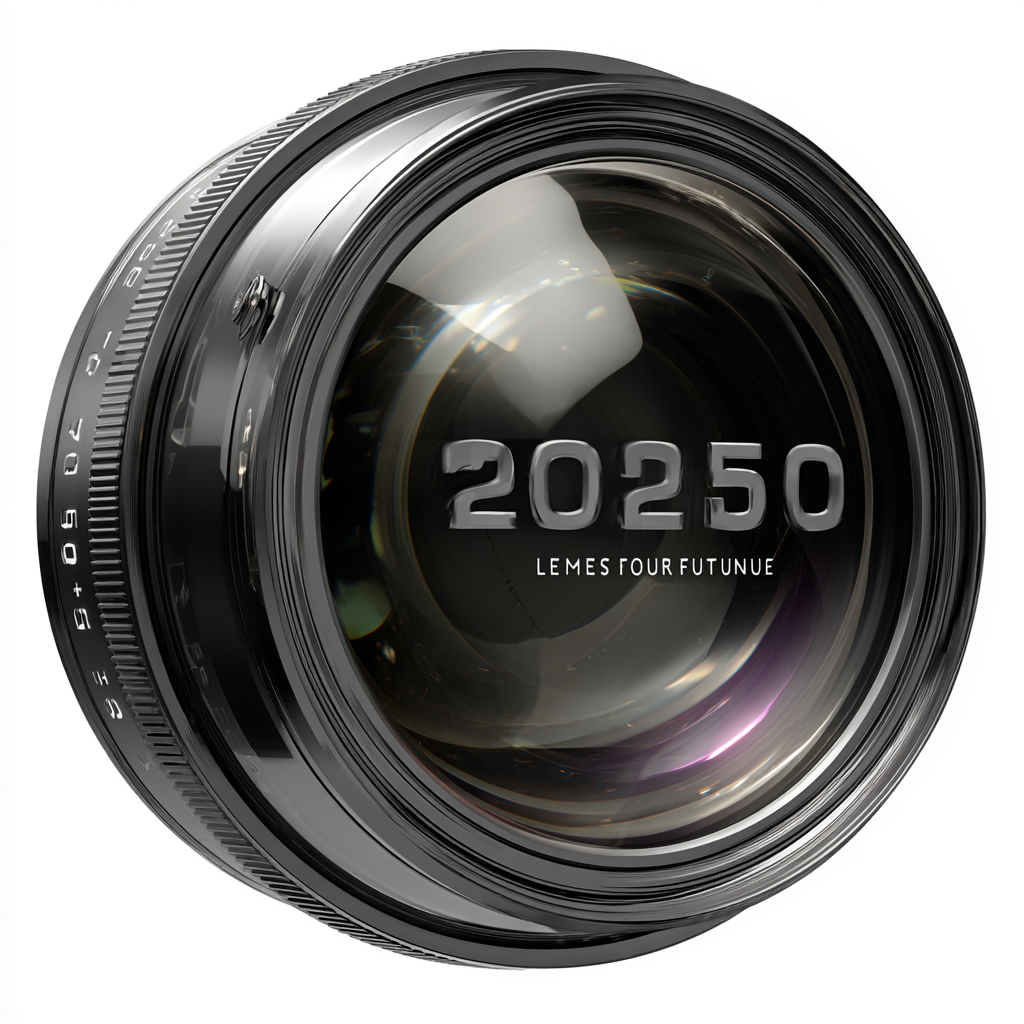The optical industry is on the brink of a revolution, driven by advancements in spherical lens technology that promise to enhance visual experiences across various applications. By 2025, the global market for spherical lenses is projected to surpass USD 10 billion, reflecting a compound annual growth rate (CAGR) of over 7% as reported by industry analysts. This growth is propelled by the rising demand for high-quality optics in sectors such as photography, augmented reality, and medical devices.
 Spherical lenses, known for their ability to focus light with minimal distortion, are becoming crucial in designing innovative imaging systems. As we explore the intersection of technology and creativity, the future of spherical lens innovation holds the potential for groundbreaking developments that cater to the evolving needs of consumers and industries alike.
Spherical lenses, known for their ability to focus light with minimal distortion, are becoming crucial in designing innovative imaging systems. As we explore the intersection of technology and creativity, the future of spherical lens innovation holds the potential for groundbreaking developments that cater to the evolving needs of consumers and industries alike.
The evolution of spherical lens technology has played a pivotal role in enhancing human vision and understanding the world around us. Since the inception of lenses in the early centuries, they have undergone significant transformations, leading to the development of varied vision systems utilized in diverse fields. Early optical innovations laid the groundwork for later advancements, allowing scientists and researchers to explore the intricacies of sight not just in humans but across many species, both current and extinct.
The relationship between optical technology and the evolution of eyesight raises fascinating questions about adaptation and functionality. Just as Dr. Douglas Clarkson examines the evolution of vision systems in nature, the progression of spherical lens technology parallels these adaptations, reflecting our continuous quest for clarity and precision in vision. The lens, an integral element in photography, microscopy, and much more, encapsulates a history of innovation that mirrors humanity's desire to see beyond mere appearances, enhancing our ability to document and interpret our surroundings through an increasingly sophisticated optical lens. As we look toward 2025 and beyond, the possibilities for what these advancements will yield are boundless, paving the way for new discoveries in both science and art.
The future of optical performance is poised for remarkable advancements, driven by innovations in spherical lens technology. One of the key innovations is the development of advanced materials that enhance lens clarity and durability. These materials not only improve optical transmission but also resist scratches and environmental factors, ensuring a longer lifespan for optical devices. This breakthrough is crucial for applications ranging from photography to high-performance eyewear, where clarity and resilience are paramount.
Furthermore, precision manufacturing techniques, including additive manufacturing and computer numerical control (CNC) machining, are transforming the production of spherical lenses. These methods allow for tighter tolerances and more complex geometries, enabling the design of lenses that cater to specific optical requirements. As industries adopt these new techniques, we can expect lenses that provide superior distortion control and improved field of view, pushing the boundaries of what is possible in optical design.
Lastly, the integration of smart technologies, such as augmented reality (AR) and smart glasses, is reshaping how we interact with lenses. By embedding sensors and displays into spherical lenses, manufacturers can create personalized visual experiences that adapt to individual needs. This fusion of technology and optics not only enhances user interaction but also opens new avenues for exploration in fields like education, medicine, and entertainment. The horizon looks bright for optical innovation as we approach 2025.
| Innovation Aspect | Description | Impact on Performance | Projected Adoption Year |
|---|---|---|---|
| Advanced Materials | Use of lightweight composites for increased durability and optical clarity. | Enhanced optical performance with reduced weight, improving usability. | 2024 |
| AI Integration | Incorporating machine learning algorithms for optimized lens design. | Higher customization level leading to improved performance in various conditions. | 2025 |
| Coating Technologies | Development of anti-reflective and scratch-resistant coatings. | Improved durability and user experience under various lighting conditions. | 2023 |
| Smart Lenses | Integration of electronic components for enhanced functionality. | Ability to adjust focus automatically, increasing utility. | 2025 |
| Sustainability Practices | Utilization of eco-friendly materials in lens production. | Reduction of environmental impact while maintaining optical quality. | 2024 |
China has been making significant strides in the field of optical manufacturing, positioning itself as a global leader in quality and innovation. The country’s commitment to high standards in production techniques has paved the way for advancements in spherical lens technology. With state-of-the-art facilities and a workforce dedicated to excellence, Chinese manufacturers are setting benchmarks in quality control that many other regions strive to emulate. This focus on superior craftsmanship not only enhances the performance of optical products but also solidifies trust among international partners and consumers.
Furthermore, as we look towards 2025, China's investment in research and development is expected to catalyze the evolution of optical technologies. The integration of advanced materials and precision engineering enhances the capabilities of spherical lenses, making them ideal for various applications, including photography, augmented reality, and medical equipment. By fostering an environment that encourages innovation while adhering to stringent quality standards, China is not just participating in the optics revolution; it is leading it. This commitment ensures that the products emerging from its factories are not only functional but also reliable and durable, setting the stage for a brighter optical future on a global scale.

As we look ahead to 2025, the market for spherical lenses is poised for significant growth, driven by advancements in optical technology and an increasing demand across various sectors. According to a recent report by MarketsandMarkets, the global optical lens market is projected to reach USD 40.3 billion by 2025, with spherical lenses playing a pivotal role in this upward trajectory. The rise in applications ranging from eyeglasses to cutting-edge camera systems underscores the versatility and importance of these lenses in modern optical solutions.
The projected trends indicate a surge in demand for high-quality imaging and enhanced performance characteristics in spherical lenses. A study by Grand View Research anticipates that the demand for spherical lenses in the healthcare sector, particularly in medical imaging, will contribute significantly to market growth. This is propelled by the ongoing innovations in fields such as telemedicine and remote diagnostics, necessitating superior optical elements that ensure clarity and precision. Furthermore, the increasing integration of spherical lenses in consumer electronics, including smartphones and VR headsets, is expected to further drive their market adoption, creating a landscape ripe for optical innovation.
This chart illustrates anticipated market trends for spherical lenses from 2023 to 2025, highlighting the expected growth in various application sectors.
The global optical industry is witnessing a transformative wave fueled by Chinese innovations, particularly in spherical lens technology. According to a report from Research and Markets, the optical lens market is expected to reach $23.8 billion by 2025, with China significantly influencing this growth. The surge in demand for high-quality lenses in sectors such as telecommunications, consumer electronics, and medical equipment underscores China's pivotal role in setting industry standards. Their advancements in lens design and manufacturing techniques are not merely localized successes; they are reshaping global expectations and driving competitive innovation.
Tip: To stay competitive in this evolving landscape, businesses should invest in the latest optical technologies and consider collaborations with leading Chinese firms to leverage their innovative capabilities.


